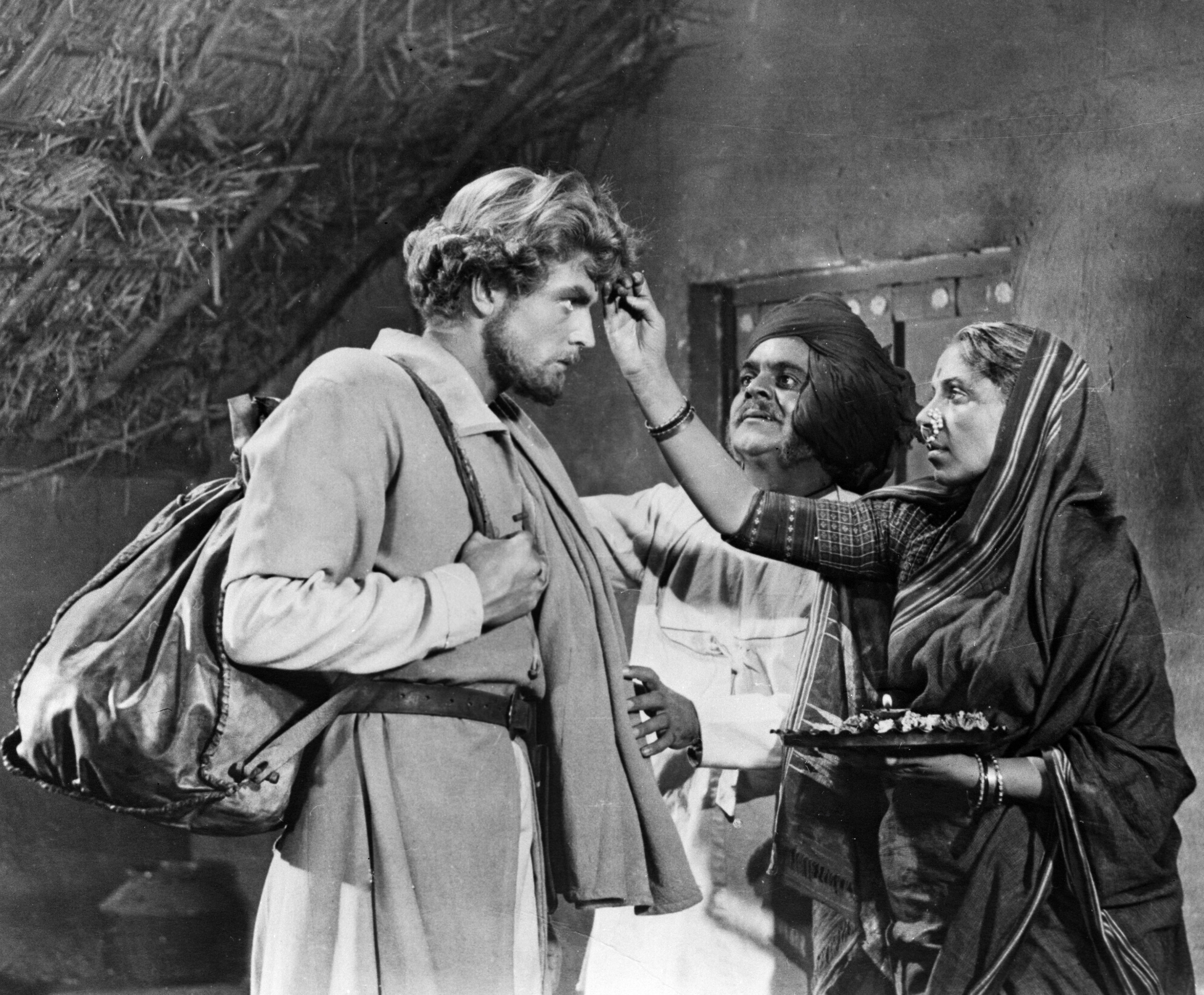
Soviet actor Oleg Strizhenov as Afanasiy Nikitin (left) and Indian actors at the shooting of the first Soviet-Indian movie "Over Three Seas".
RIA NovostiIndia has long attracted Russian attention. The news of a country far abroad reached Russia in two ways – through literary sources and through trade contacts.
Among the earliest sources of Russian-Indian relations is Athanasius Nikitin’s the "Journey Beyond Three Seas," in the 15th century. It is the story told by a Russian merchant about his three-year journey across India. This book was not only a monument of Russian literature, but also a unique source of information about India, translated into many languages. Athanasius (also known as Afanasy) Nikitin was in India nearly thirty years before Vasco da Gama and, in fact, opened the country for Europeans.
After Nikitin, however, it took two centuries to establish direct contact between India and Russia. It was only in the late 17th century that Russian merchant Semyon Malenkiy brought a letter from Peter the Great to the Badshah, Mughal Emperor Aurangzeb, with a request to allow him to sell Russian goods, as well as purchase local products. In 1696 Aurangzeb received Semyon Malenkiy and allowed him to conduct free trade. After staying for six years in India, and visiting Surat, Burhanpur, Agra, Delhi and other cities, Russian merchants returned to Moscow with valuable Indian goods.
The success of this shopping expedition opened the way for the expansion of Russian-Indian trade relations. Soon, a whole colony of Indian merchants, with more than two hundred people, was formed in Astrakhan.
Peter the Great arrived in Astrakhan in 1722 and met with the Elder of the Indian merchant trading company Anbu-Ram, who sought permission from the Emperor to allow Indians transit trade with China and west European countries via Russia. Permission was granted, and soon Indian merchants became frequent guests in Moscow, St. Petersburg, Russia's largest Makaryevskaya fair in Nizhny Novgorod, and even in Arkhangelsk!
By the late 18th century, India became a popular topic in the Russian press. The articles were, however, generally based on the materials from European sources. The interest of Russians in the events in India intensified especially after the country was occupied by the British. More and more publications started to appear in Russian periodicals, the authors of which were clearly aware of India’s tragedy, and worried about the fate of the Indian people.
The "Bulletin of Europe" magazine, for example, published an article entitled "Why does England follow two politicians?" "Why is it that what India respects as the legitimate right is called robbery in Europe? Here it advocates for the restoration of the legitimate rulers, there it advocates for the overthrow of the legitimate rulers, and everywhere, for increasing its power."
The growth of anti-British sentiment in Russia even led to a draft of a joint Russian-French military expedition to India to pull the country out from under the British rule. The first time the idea of the Indian campaign was expressed by Napoleon Bonaparte in 1797, and he soon attracted the Russian Emperor Paul I to work on implementing the idea.
This plan caused the death of the Russian emperor as a result of a conspiracy organized by the British Ambassador in St. Petersburg. This was the starting point of the "Great Game," the bitter struggle between Britain and Russia for influence in Afghanistan and Central Asia.
Lord Palmerston was the British foreign minister who was convinced in 1830 that the Russian advance in Central Asia would be an impetus for popular uprisings in India.
These fears were not unfounded, because the Russian press regularly wrote about how Britain robs India. The most influential Russian magazine "Notes from the Fatherland" in 1844 published an article by Russian traveller Alexander Rotchev.
"I was struck by the poverty and dire misery,” he wrote, “which afflicted three-quarters of the Indian population." Through such publications Russians saw India as "an impoverished disfranchised colony, looted by the British."
The Mutiny of 1857-1859, and its brutal suppression attracted great attention among the Russian public and evoked the sympathy of the Russian people for the rebels. Russia sharply activated its diplomatic efforts, having decided to open a consulate in India. However, the British government strongly impeded the issue of the permit. As a result, the Russian diplomatic mission in Mumbai could only be opened in 1900.
An important stage in the spiritual rapprochement of the peoples of India and Russia were the Russian Revolutions of 1905 and 1917, which had a huge impact on the growth of the national liberation movement in India.
The centuries-old history of Russian-Indian relations shows how relations between these countries have gone far beyond the norm of inter-state relations. The two great civilisations were drawn to each other, and a great deal in our world depends on this attraction.
All rights reserved by Rossiyskaya Gazeta.
Subscribe
to our newsletter!
Get the week's best stories straight to your inbox